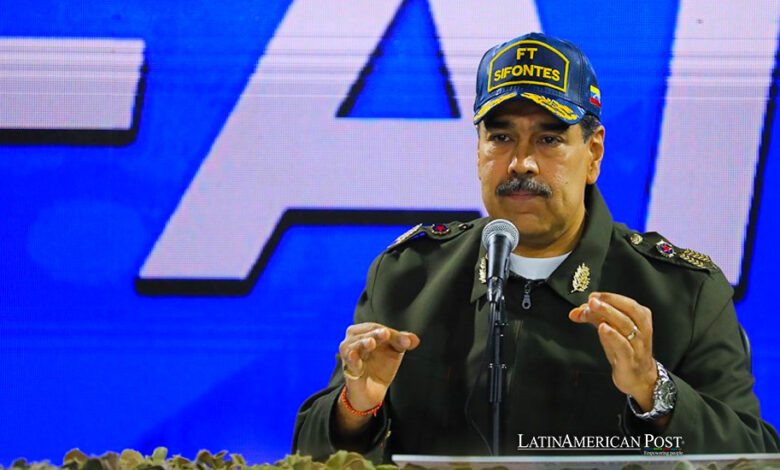Venezuela’s Eastern Caribbean Exercises Escalate Border Dispute

In the warm waters of the Eastern Caribbean, tensions are running high as Venezuela and the United Kingdom engage in a geopolitical standoff that has raised concerns across Latin America and beyond. At the heart of this escalating dispute lies a contentious border region, vast oil deposits, and the specter of military maneuvers.
Tensions Escalate: Maduro Deploys Troops Amidst Dispute
Venezuelan President Nicolás Maduro made headlines when he ordered 6,000 troops, comprising air and naval forces, to conduct defensive exercises off his nation’s eastern coast. These exercises target the ongoing dispute over the Essequibo, a sparsely populated region roughly the size of Florida, rich in oil resources and strategically located in the Atlantic Ocean.
The recent arrival of the British warship HMS Trent off the shores of Guyana, Venezuela’s eastern neighbor, catalyzed Maduro’s assertive response. In a nationally televised address, he characterized the British deployment as a direct threat to Venezuela and a violation of a recent agreement between the South American nations.
UK-Guyana Joint Operations Confirmed
“We believe in diplomacy, in dialogue, and peace, but no one is going to threaten Venezuela,” Maduro declared firmly. “This is an unacceptable threat to any sovereign country in Latin America.”
The root of the dispute can be traced back to Essequibo, an area under Guyana’s control for decades. However, Venezuela reignited its historical claim to the region in December through a controversial referendum. Venezuelan voters were asked whether the Essequibo should be transformed into a Venezuelan state, a move that has further exacerbated tensions in the region.
As the dispute intensified, leaders from both nations convened on the idyllic Caribbean island of St. Vincent and signed an agreement to seek nonviolent means to resolve their differences. However, Guyana’s President Irfan Ali emphasized that his nation retained the right to work with its partners to defend its interests.
HMS Trent: A Central Figure in the Escalating Drama
The HMS Trent, a versatile patrol and rescue ship, is central to this escalating drama. Deployed initially to intercept drug traffickers off the West Coast of Africa, the vessel’s mission took a dramatic turn on December 24 when it was redirected to the waters near Guyana. The ship boasts impressive capabilities, accommodating up to 30 sailors, an 18-strong marine contingent, and an arsenal that includes 30mm cannons, a landing pad for helicopters, and drones.
While authorities have not specified the expected arrival date of the HMS Trent off Guyana’s shores, the United Kingdom’s Defense Ministry has confirmed that joint operations with Guyana’s defense forces will take place.
Guyana’s Defense: A Modest Force Facing Escalating Situation
Guyana, a nation of approximately 800,000 people, maintains a relatively modest military presence consisting of 3,000 soldiers, 200 sailors, and a fleet of four small patrol boats known as Barracudas. In light of the escalating situation, Guyana has affirmed its commitment to safeguarding its territorial integrity.
The implications of this geopolitical standoff extend beyond the borders of Venezuela and Guyana. The region’s strategic importance, rich natural resources, and the involvement of a global power like the United Kingdom make it a subject of international scrutiny.
Also read: Brazil Bolsters Northern Border Amid Venezuela-Guyana Dispute
Diplomatic efforts to defuse tensions remain critical as the situation unfolds in the Eastern Caribbean. The world watches closely, hoping for a peaceful resolution to a dispute that has the potential to impact not only the nations directly involved but also the delicate balance of power in the wider Latin American region.




